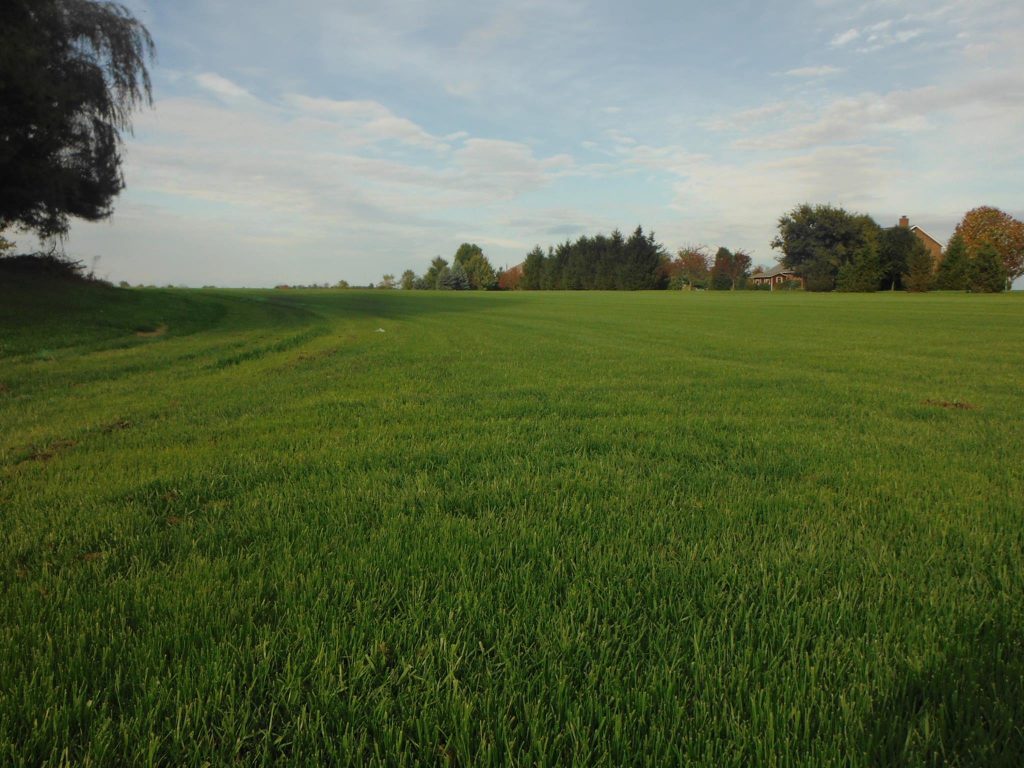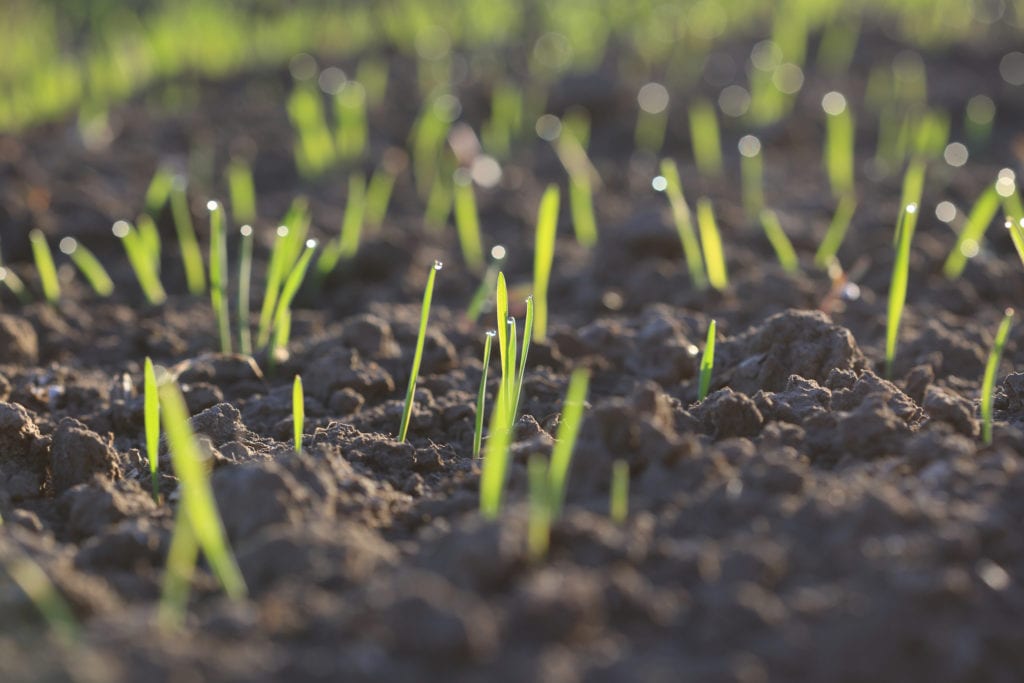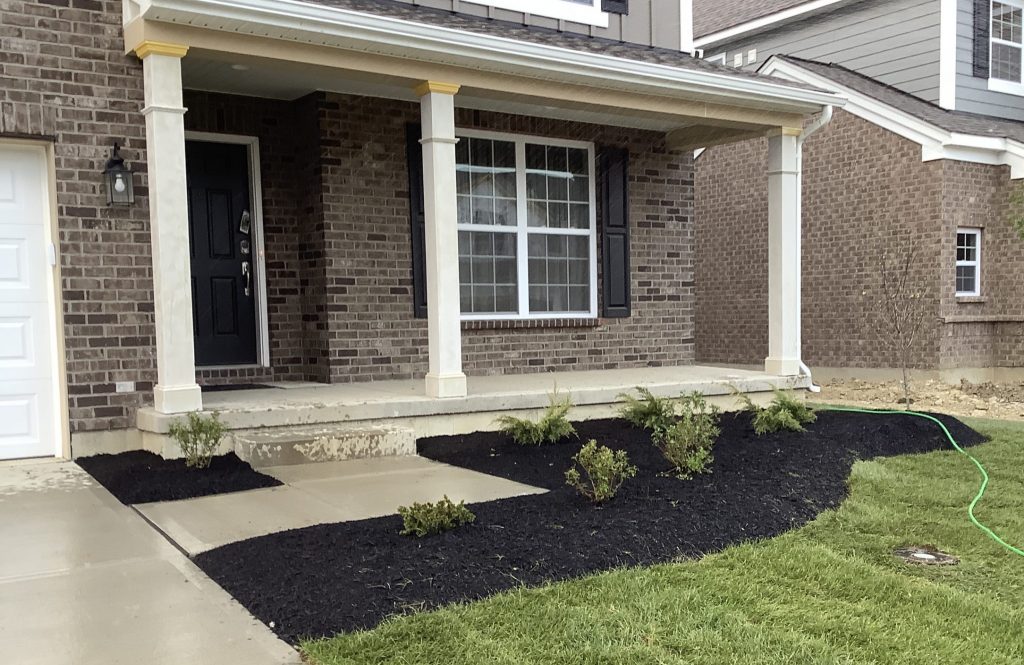How To Take Care of Your Lawn and Landscape
Sod

Your sod should be watered 2 times per day for 15-20 minutes. Our recommended times are (8:00 am, and 1pm). Water I” or more per day.
You can mow as soon as your sod is rooted into the ground, test a couple areas by gently pulling up on the sod to see if it is attached. Typically takes 2-3 weeks to root down.
After the second mowing, starter fertilizer with a high nitrogen content and quick release should be applied. Remember to water immediately after fertilizing. Should dormant weed seeds germinate, apply a weed and feed. Weed and feed should be applied in the morning before the dew has evaporated and shouldn’t be watered for 24 hours. Once the yard is established, we recommend a complete lawn care program throughout the year from Harvest Time Lawn Services.
If watered properly your seed should germinate within 7-14 days. In general, ten minutes of watering per session (morning and evening) will provide enough water to keep the top couple inches of soil moist. As your new grass seed grows and flourishes, you can water deeper and less frequently – this will encourage established grass roots to extend deeply into the soil.
Newly graded and seeded lawns exposed to periods of long heavy rain or strong storms may need additional work and seeding. Rain and wind can wash and blow seed away; water run off can cause channels to form and additional rocks to be exposed as the loose soil is being eroded away. Removal of exposed rocks, raking and adding of topsoil and seed will be needed to address any affected areas. Drainage swales, gutter outlets and hillsides are especially susceptible to erosion and washout. Upgrading to Erosion Blankets and or Sod can be helpful in preventing damage to your lawn from storms and heavy rain. To inquire about a quote on either one of these products, please call our office.
After the second mowing, starter fertilizer with a high nitrogen content and quick release should be applied. Remember to water immediately after fertilizing. Should dormant weed seeds germinate, apply a weed and feed. Weed and feed should be applied in the morning before the dew has evaporated and shouldn’t be watered for 24 hours. Once the yard is established, we recommend a complete lawn care program throughout the year from Harvest Time Lawn Services.
Seed

If watered properly your seed should germinate within 7-14 days. In general, ten minutes of watering per session (morning and evening) will provide enough water to keep the top couple inches of soil moist. As your new grass seed grows and flourishes, you can water deeper and less frequently – this will encourage established grass roots to extend deeply into the soil.
Newly graded and seeded lawns exposed to periods of long heavy rain or strong storms may need additional work and seeding. Rain and wind can wash and blow seed away; water run off can cause channels to form and additional rocks to be exposed as the loose soil is being eroded away. Removal of exposed rocks, raking and adding of topsoil and seed will be needed to address any affected areas. Drainage swales, gutter outlets and hillsides are especially susceptible to erosion and washout. Upgrading to Erosion Blankets and or Sod can be helpful in preventing damage to your lawn from storms and heavy rain. To inquire about a quote on either one of these products, please call our office.
After the second mowing, starter fertilizer with a high nitrogen content and quick release should be applied. Remember to water immediately after fertilizing. Should dormant weed seeds germinate, apply a weed and feed. Weed and feed should be applied in the morning before the dew has evaporated and shouldn’t be watered for 24 hours. Once the yard is established, we recommend a complete lawn care program throughout the year from Harvest Time Lawn Services.
Landscape

Spring – Normal rains will take care of most watering needs unless the previous winter was relatively dry. Check soil moisture several times a month through May. Pay particular attention to first-year plants.
Summer – Summer is the most important time to check soil moisture. Check it weekly and water about every two weeks. You may need to water weekly in very hot, dry weather, or if your plants have been newly in stalled. Beware, light summer showers don’t provide enough moisture for newly planted first-year landscape plants. It is important to not spray water over the top of shrubs and trees in the heat of the day, as this will scorch the leaves.
Fall – Some people don’t realize that September and October are important months to keep plants moist. Plants should not go into winter with dry soil or roots, because winter sun and wind are just as hard on plants as summer drought. So if the late summer and early fall have been dry, check the soil for adequate moisture.
Plants located under building overhangs get very little moisture from rain. They must be watered more often by hand or with a soaker hose
Landscapes can never be entirely maintenance free. There are several guidelines that you, as a homeowner, must follow to maintain your newly installed landscape plants. When transplanted, plants undergo stress and transplant shock, especially during summer months. Plants usually produce smaller leaves than normal when under stress. They may even drop their leaves when undergoing shock. Even though this may occur, if the stems are still green when scratched with a fingernail, it is possible for the plant to produce new leaves. To combat this normal stress, it is recommended to keep the root ball thoroughly moist by following the described watering procedures as outlined below. The basic needs of landscape plants (besides light) are water, fertilizer, mulch, and pruning. Some plants will require specific care and we suggest you contact your local garden center for reference material or hire a professional plant care specialist to maintain your landscape. The easiest and most basic care is proper watering.
Water is the most important need of landscape plants. They need about 1″ of water per week or soil moisture to a depth of 8-12″. A lot of water on the surface doesn’t help unless it soaks down to the roots. The Finger Test: Stick your finger through the mulch down into the soil through the root ball about three inches. If the soil feels moist, do not water. If the soils feels dry, water. Plants do not need water on a daily basis, so be careful to not over-water since Ohio’s clay soils tend to hold water.
Watering Methods: Place a slow trickle or a hose at the base of each tree for 30 to 60 minutes, shrubs for 5 to 10 minutes.
FAQs
General
We offer the big roll of sod that is 405 sqft. The type of grass we grow and install is called tall fescue blend. We are the solely supplied by Henderson Turf quality turfgrass fescue mix and all of our sod and seed is this premium brand.
Sod has two years of maintenance (fertilizing, overseeding, watering, and mowing) prior to being cut and transplanted into your lawn.
Before Install
We will need a minimum of 8 feet of access to get equipment into your yard.
Scheduling is handled by your production manager for your builder.
We will be able to complete your entire lawn in one day.
We will level rock hound and hand rake your yard and remove any rocks on the top 1-2” that would inhibit the establishment of your turf.
Rain and heavy watering can cause soil to erode which may expose rocks that are under the 1-2” surface. This is very common and typical especially on new construction lots. If this occurs, it is the responsibility of the homeowner to remove, re-seed, fertilize and maintain the lawn.
After Install
Yes, the sod is from the same field and we typically install front and back on same day.
If you are a homeowner with a builder we are not able to replace sod through you. However you may be able to contact your builder and have them reach out to us for a repair. The development of the yard is the responsibility of the homeowner.
With proper care (watering, weed control and if necessary, over seeding) it will take two years for it to match.
Netting typically disintegrates within 2-3 years. We recommend leaving any visible netting alone as its purpose is to hold the area together as the seed grows. However, if it is bothersome, you may be able to cut out the bulging area. The netting is produced by Magnum ENP.
Your project manager should be able to provide you with a drawing and plant list for your home.
